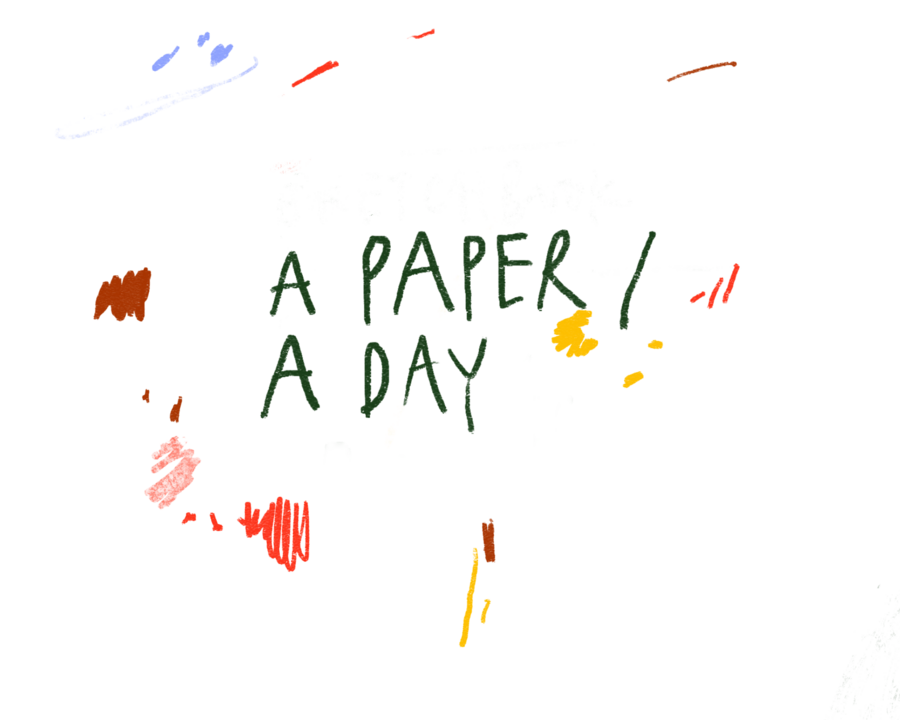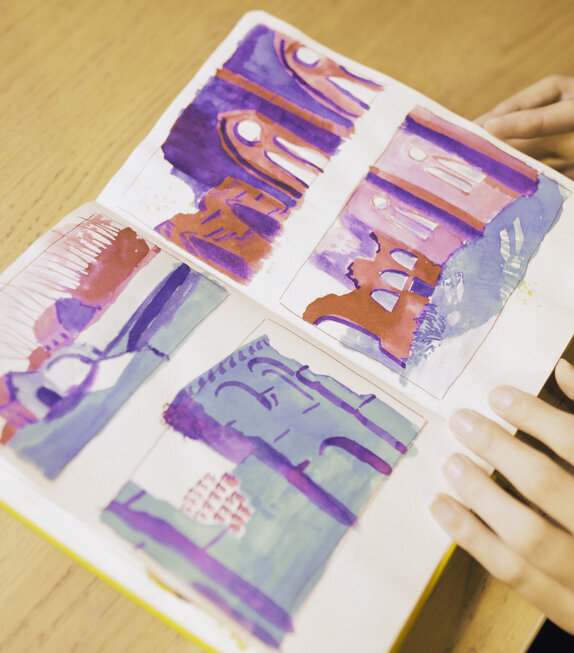Browse the sketchbook of Lize Crauwels

Lize Crauwels finds grip on working in her sketchbook. With markers and bright colours, she shapes her emotions on paper. Although it is often about hiding, there is a lot to discover in Lize's sketches. For A paper / a day 2024 we visited her studio. ‘You can let yourself draw “badly”, that can trigger a lot.’
How important is your sketchbook?
Lize: ‘During my high school days, I didn't take any art education. So I learned about the concept of a sketchbook very late. Throughout my education afterwards, I always sketched a lot. And that's quite a long time, because I followed many directions: Printmaking and Drawing and Theatre Costume. It wasn't until my third undergraduate that I realised how important my sketchbooks had become. I really need them.
The sketchbook is the basis for all my work. Besides being a personal object, it is also really an essential part of my artistic research. That's where everything starts. I use it as a tool to deal with my emotions. The language that comes out of that, I then explore further in my autonomous work. So it's very personal.'
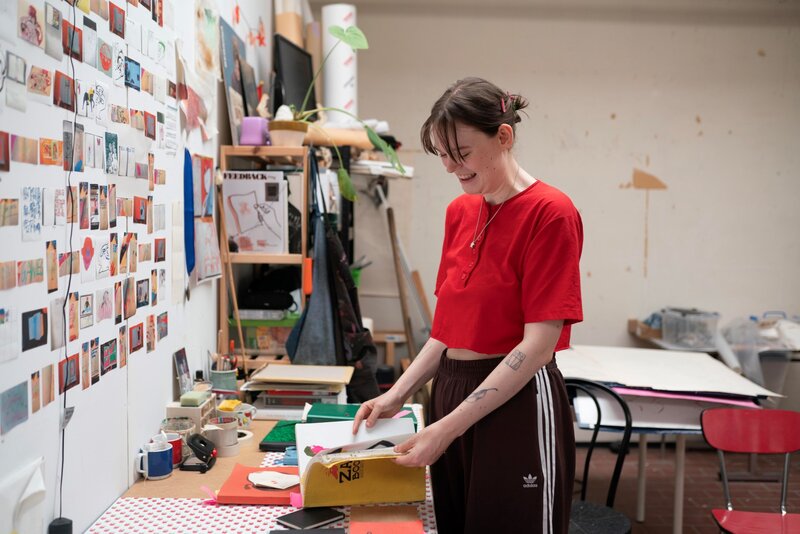
How often do you draw in your sketchbook?
Lize: ‘For a long time, I made a commitment to myself to draw every day and not just when I felt like it. That way it became a habit. Usually it was in the morning, or in the evening before going to bed. Now I no longer draw every day, because by now I have collected so much material that I am quite busy with what is there. But drawing in my sketchbook is still the first thing I do when I come to my studio.
Sometimes I also draw on loose sheets. It can be interesting to see your work develop on a separate sheet. In a sketchbook, an image is sometimes enhanced by the surrounding images. You don't get that effect working on a loose sheet. But the sketchbook is still something special. Because you close it after drawing, it has something intimate, similar to a diary. I allow myself to put everything in it. So also shopping lists and bad drawings (laughs). It makes something happen in the sketchbook that you can hardly grasp.'
How do you start it and what elements often recur in your work?
Lize: ‘I rarely start drawing with forethought and work from memory. It helps that I don't set expectations too high and stick to the agreement that I put pen to paper. 'You very often read “go away” in the pages of my sketchbook. A long time back, I really felt the need to write down those words. Meanwhile, it has become a kind of mantra, and also kind of appropriate for my work. In it, I often ask the question ‘may you see this, or may you not see this?’. That's where poetry lies, I think.'
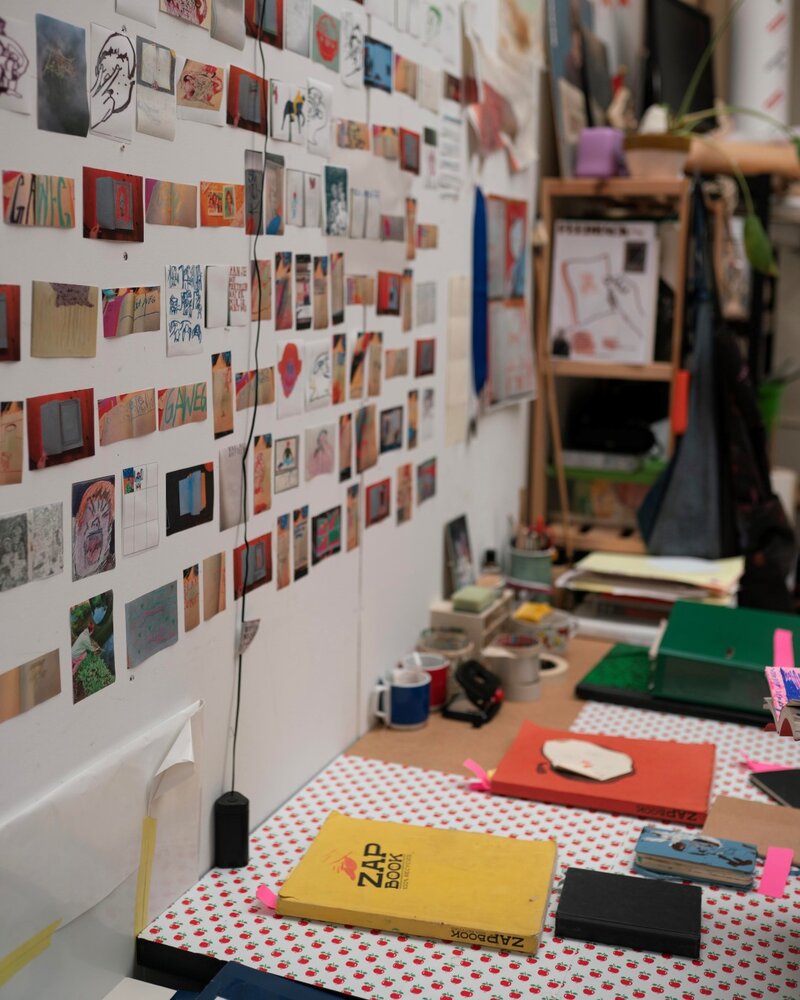
What materials do you like to use?
Lize: ‘My favourite materials are markers, especially brushwriters. They give your drawing a watercolour-like character. I always use very bright colours. I work with these on recycled grey paper. I really like the contrast of the grey paper with the bright colours. The markers react very well to the thin paper, especially when the colours seem to ‘bleed through’ or bleed out. As a child, I was very fascinated by drawings of Suske & Wiske, which are built up with strong, simple lines. That is really my biggest goal: to be able to put everything down with a simple line.
I also obliged myself for a while to work only with two colours in a sketchbook. I also always choose the same type of sketchbooks. It helps to lay down choices and not keep options open, so you can push the material you work with to its limits.'
How does your sketchbook relate to your autonomous work?
Lize: ‘I noticed over time that that balance sometimes gets lost. A sketchbook is not a finished creation. It remains a failure zone in which I can try and fiddle, and my autonomous work develops from there. The pitfall is that you set the bar too high for yourself while sketching. And I find it important that my artistic practice transcends the almost therapeutic importance of my sketchbook.
I base my autonomous drawings on creations from my sketchbooks. I flip through them for inspiration. Full sketchbooks I don't put aside; I may flip through them again years later and get ideas for my autonomous work from them. Or I will continue sketching in them. For example, it was very interesting to see drawings I made when I was nineteen.'
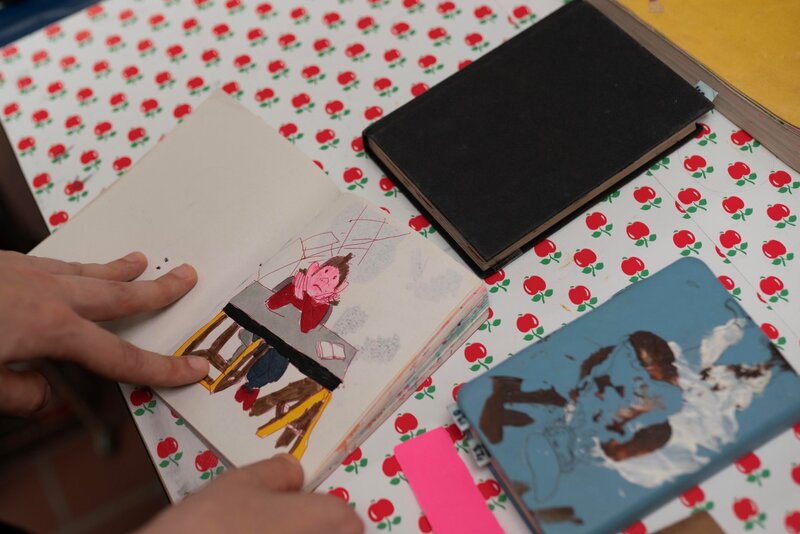
Do you also use sketches in your graphic work?
Lize: ‘Yes, but I don't literally try to convert my drawings to a screen print. Sometimes I do it to sell a print run, but purely for the work itself I don't. Often the drawing is enough and a sketch can be a work in itself. I ask myself the question ‘is it necessary to print this work?’ It is interesting to see what the screen printing technique does to the drawing. For example, I made very large screen prints of marker textures. I volunteer at BarVIZart's screenprinting studio. I do that mainly out of a technical interest. Printing techniques are not literally reflected in my work, but the graphic work process has influenced my artistic practice.'
Is there a page from your sketchbook that is particularly important to you?
Lize: ‘This is a drawing from a few years back. It was when I started drawing daily. I often drew my bed and empty furniture then. And you can already see the theme of ‘hiding’ and ‘seeing or not seeing’ emerging there. That was the point where I learned that I really can draw anything, and that it doesn't necessarily have to be good. You can make yourself draw ‘badly’, in inverted commas (laughs). Just putting something purely on paper, without much thought or the intention of making a good work: that can trigger a lot.'
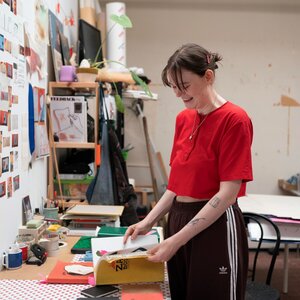
Lize Crauwels
°1998
Has a studio in Wilrijk.
Studied Printmaking and Drawing at the Academy of Antwerp.
